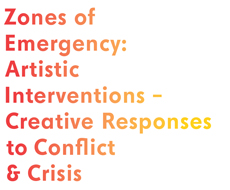In Water for Life, James Wescoat, a historian, geographer, and landscape architect, discusses the interplay between water and human activity, specifically the interrelationship of water’s role in both social and environmental systems. He believes that water has four main functions in systems that are undisturbed by humans, and has different functions in systems that are affected by and that support human activity.
He then discusses eight “milestones” that have taken place over time in water management, beginning with water from natural sources to building structures like dams and irrigation systems to today considering the consequences of those systems. However, he believes that it is difficulty to assess the effect of water management for humans because most take place immediately after a project and the data lacks long-term followup. Moreover, there is little comprehensive evaluation of the full range of environmental and social effects of a project.
Currently, Wescoat works on water conserving design, trying to “draw together the conservation of water infrastructure with the conservation of the water resources themselves, but also the human livelihoods that depend on water and the cultural needs associated with water,” with the aim of developing integrated water conserving design and studying the links between natural hazards and environmental design.
Wescoat, who has experience in disaster relief planning, is also the co-director of MIT Japan 3/11 Initiative, whose goal is to raise money for a memorial community center in Minami Sanriku and to perform a multi-year long-range effort to study and promote disaster-resilient planning, design, and reconstruction. In one of the projects, “Strategies for Small Coastal Villages,” Wescoat and colleagues aim to create alternative visions for resettlement and help new communities become more aware of the need for disaster resilient planning, determine sites of new buildings based on soil, proximity to coast, elevation, hazard preception, etc., and work on strategies for small coastal villages to identify specific disaster resilient planning recommendations.
While reading Wescoat’s works, I was interested in his linkage between disaster resilient design and effects on human society’s well-being. This highlights the importance of keeping such disaster-resilient design in mind when helping cities like Minami Sanriku that are effected by the extremes of water, such as floods, droughts, or tsunamis. Wescoat consistently emphasizes that landscape architects should think about structures in geographic and environmental terms to see how societies draw on local water supplies. Hopefully the recommendations that emerge from his work with the 3/11 Initiative will spark reconstruction, not only in Minami Sanriku, but also in other cities that are currently vulnerable to destruction by natural forces.
Some interesting articles about Wescoat and his work:
http://japan3-11.mit.edu/wp-content/uploads/2011/09/PROJECT_-Strategies-for-Small-Coastal-Villages.pdf
http://web.mit.edu/newsoffice/2010/profile-wescoat-1014.html
http://web.mit.edu/newsoffice/2011/cis-japan-initiative-0720.html

